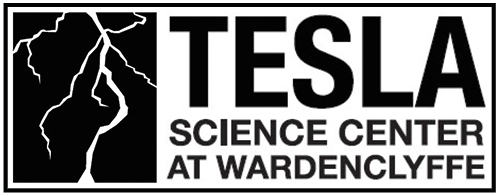Announcements
CNBC Article – He already has a famous car company named after him. And soon, one of America’s great underdog inventors will get an additional boost to his legacy when supporters open the Tesla Science Center at the lab in Shoreham, New York, where he built a giant tower in the hopes of wirelessly transmitting power around the globe, for free.
“This was really the place he was expecting to create his crowning glory,” said Jane Alcorn, president of the Tesla Science Center at Wardenclyffe.
Conspiracy theorists revere him for his talk of aliens and UFOs, and the FBI was concerned about his “death ray.” Pop culturists may know him best for the Tesla coil or David Bowie’s portrayal of him in ”The Prestige.”
“He was a genius who was trying to move the world forward, and he was crushed by greed and competition,” said Joseph Sikorski, the director of a new documentary, “Tower to the People,” which documents the decades-long efforts to turn the lab at Shoreham, New York, into a museum. “We hope to vindicate his struggle.”
To be sure, no one knows if Tesla’s grand idea could have worked even if he had the financial support he sought. “To this day, Wardenclyffe remains a scientific mystery,” Jill Jonnes writes in the book “Empires of Light: Edison, Tesla, Westinghouse and the Race to Electrify the World.”
“There had been an enormous amount of practical work and gigantic financial investment required to make Tesla’s AC motors work in the real world, necessary development work that he often airily overlooked,” wrote Jonnes in her book.
“Not only could Tesla not afford to move forward on his almost finished tower, he could not even afford the lawyers he desperately needed to defend his many patents, depriving him of all sorts of royalties. A loner by nature, unattached to the power and prestige of a great university or a major corporation, Tesla was at a disadvantage,” she added.
Built in a potato field in 1901, the lab was used by Tesla for years until he couldn’t secure enough funding to continue his research. (Sikorski’s film argues that J.P. Morgan pulled his support and persuaded others not to invest once he realized free wireless energy, if Tesla could pull it off, could hurt his own business interests.)
Tesla lost the lab, the tower was destroyed and, by 1939, Peerless Photo Products was using it as a photochemical plant. The company was later bought by Agfa, which stopped using the site in 1984. Declared a state Superfund site, the property was cleaned up by Agfa and put it up for sale in 2012, drawing the attention of condo developers.
That was when Inman’s Indiegogo campaign came through, providing the funds for the non-profit to purchase the site instead in May 2013.
Tesla’s 187-foot tall Wardenclyffe Tower, intended to transmit electricity wirelessly to Europe, was demolished in 1917. But its octagonal base remains, as well as the Stanford White-designed lab. Preliminary tests indicate there may also be a series of tunnels under the site.
Volunteers from around the world have been coming to Shoreham to help clean up the overgrown grounds, Alcorn said. Services have been donated by the likes of blacksmiths, electricians and lawyers in the multiyear push to get the doors open to the public. Musk has also promised a Tesla auto supercharger station on the site, she said.
The main lab will not be among the first buildings to open this summer, as it needs more repair work. The damage was compounded by thieves whose work left the building laden with asbestos, which will require an expensive cleanup upwards of hundreds of thousands of dollars. Once the asbestos is gone, the building will need public restrooms, air conditioning and accessible facilities to come up to modern code. Tens of millions of dollars will still be needed to open the full museum, she predicted.
Supporters have a long way to go. But the latest funding project, which offers donors their name on a brick at the museum, has already raised more than $425,000, double its goal.
The goal is to use the site to promote science education and offer space for young companies engaged in scientific research. Even before the doors open, some of those efforts are taking place–at the Teslamania physics teachers’ innovation fair at the nearby Stony Brook University this weekend, for example, and at the Nikola Tesla Memorial Conference in January.
Attendance at Sikorski’s film premiere may be a good indication of the growing support for Tesla’s legacy.
“He’s going from cult hero to mainstream,” Sikorski said. “The real goal we’re trying to do with everything is to get his research continued, and remove the stigma, because most people who have heard of Tesla think he is a mad scientist and a loon.”
The Oct. 4 premiere in the ballroom of the New Yorker hotel drew more than 500 people, including science nerds, director Jim Jarmusch, Tesla’s great grandnephew William Terbo, the Consul General of the Republic of Serbia Mirjana Zivkovic, and like Tesla, other Serbian-Americans. Sikorski’s film will screen in 10 European cities next year and he’s seeking a broadcast distributor for the United States, he said.
Paul Bardis and his son Nico, 15, came from Plattsburgh, New York, after reading about the New Yorker premiere on Facebook. Nico said he’s a fan of Tesla’s unconventional ways. “He thinks outside the box,” Nico said.
“And we do believe in free energy,” Paul Bardis said. Asked why Tesla didn’t succeed on that front, Paul answered: “Because J.P. Morgan didn’t want it to happen.”
The Bardises said their Tesla fascination started nearly a decade ago after watching another Tesla documentary. “It’s quite fascinating that he invented so many things and we [Americans] don’t know about him,” Paul Bardis said. “We just know Edison.”
If supporters have their way, that may change next summer.




